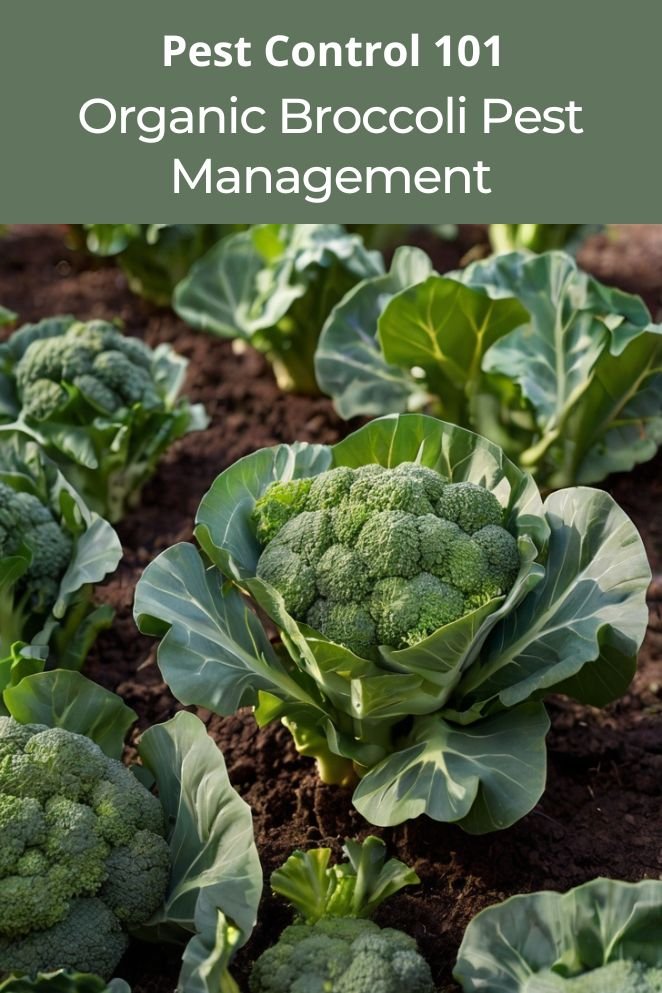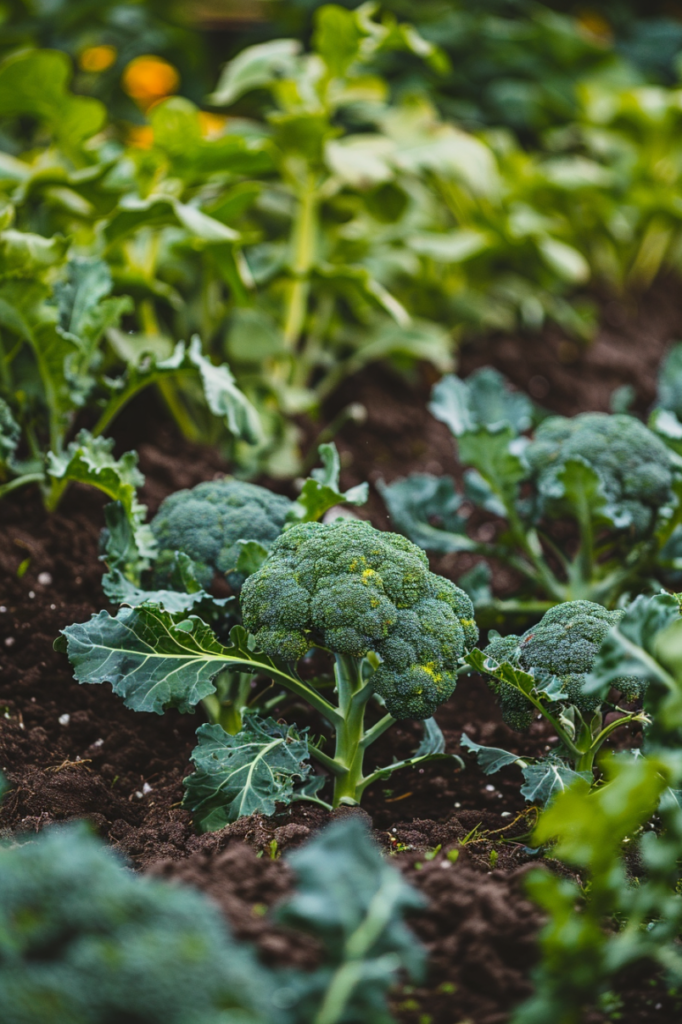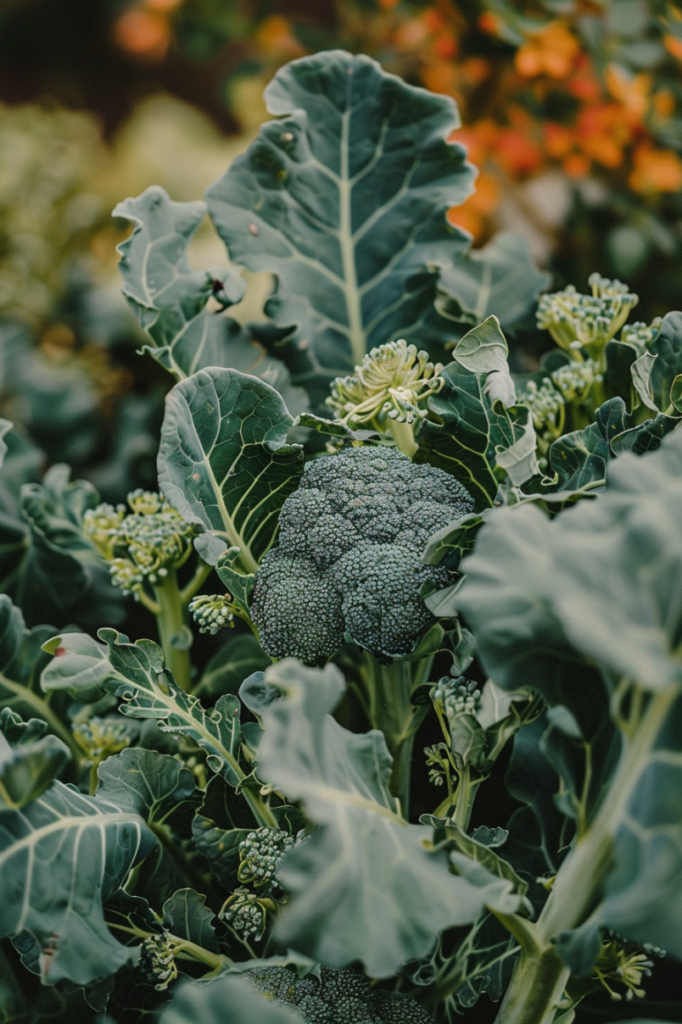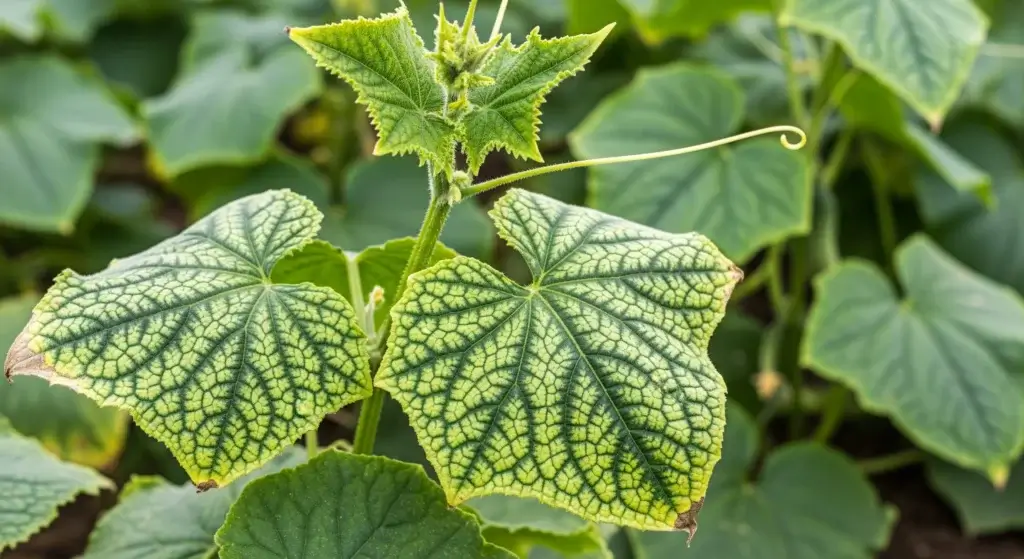
Growing broccoli in your garden can be incredibly rewarding.
Not only is broccoli packed with vitamins and nutrients, but it also adds a delicious, crunchy texture to a variety of dishes.
However, like any other garden vegetable, broccoli is susceptible to a range of pests and diseases.
Managing these effectively is crucial to ensure a healthy and bountiful harvest.
In this guide, we’ll explore common broccoli pests and effective strategies to manage them.
Common Broccoli Pests
Cabbage worms
Cabbage worms are the larvae of small white butterflies called cabbage whites.
These worms are a big problem for broccoli and other vegetables in the crucifer family.
They feed on the leaves, chewing through them and creating large holes.
As they munch away, they leave behind frass, which is basically their waste.
This damage weakens the plant and can lead to reduced yields and overall plant health.
Aphids
Aphids are tiny, soft-bodied insects that gather on the undersides of leaves and stems.
They suck out the sap from the plant, which causes the leaves to curl, turn yellow, and become distorted.
Aphids can also spread plant viruses, which can further harm the plant.
Their feeding not only weakens the plant but also makes it more susceptible to other problems.
Flea beetles
Flea beetles are small, black beetles known for their jumping ability, similar to fleas.
When disturbed, they jump away, making them hard to catch.
They chew small, round holes in the leaves of broccoli, which can reduce the plant’s ability to photosynthesize effectively.
This damage can stunt the plant’s growth and affect its overall health.
Downy mildew
Downy mildew is a fungal disease that affects broccoli plants.
It starts with yellow spots appearing on the top surface of the leaves.
On the underside of these leaves, you’ll see a white, fuzzy or downy growth.
This fungus thrives in cool, moist conditions, making it more likely to develop in damp weather.
If not managed, downy mildew can weaken the plant and significantly affect its health and productivity.
Black Rot
Black rot is a bacterial disease that impacts broccoli by causing yellowing and darkening of the leaf veins.
Over time, this condition can lead to the leaves dropping off.
It spreads quickly in warm, wet environments, making it a serious threat during rainy or humid periods.
If not controlled, black rot can destroy a broccoli crop, leading to substantial losses.
Clubroot
Clubroot is a disease caused by a fungus-like organism found in the soil.
It results in the roots of the broccoli plant becoming swollen and misshapen.
These distorted roots struggle to take up water and nutrients from the soil, which can lead to stunted growth and wilting of the plant.
Clubroot is particularly problematic in poorly drained soils and can severely affect plant health if not addressed.

Effective Pest Management Strategies
Floating row covers
Floating row covers are lightweight fabrics that you can place over your broccoli plants.
These covers create a barrier that keeps pests out while still allowing light, air, and water to reach the plants.
They are particularly useful for preventing common pests like cabbage worms and flea beetles from laying their eggs on your plants.
To be most effective, put the covers on immediately after planting.
This proactive measure helps keep your broccoli safe from pests from the start.
Hand-picking
If you spot pests on your broccoli plants, hand-picking can be an effective solution, especially for smaller infestations.
Regularly check your plants, focusing on the undersides of leaves where pests like cabbage worms and aphids often hide.
Carefully remove any pests you find.
While this method requires time and effort, it can significantly reduce pest numbers and help keep your plants healthy.
BT (Bacillus thuringiensis subsp. kurstaki)
BT is a natural bacterium that targets specific insects, particularly caterpillars such as cabbage worms.
When these caterpillars ingest BT, it disrupts their digestive system, causing them to stop feeding and eventually die.
BT is a safe option for controlling pests because it doesn’t harm humans, pets, or beneficial insects when used properly.
It’s a targeted way to manage pests without causing broader ecological damage.
Pyrethrins
Pyrethrins are natural insecticides made from chrysanthemum flowers.
They are effective against a variety of pests, including aphids and flea beetles.
However, pyrethrins can also kill beneficial insects that help control other pest populations.
Therefore, it’s best to use pyrethrins sparingly and only when necessary.
They should be considered a last resort after other pest management methods have been tried.

Beneficial insects
Introducing beneficial insects to your garden is a natural way to control pest populations.
These helpful insects prey on pests that harm your plants. For example:
- Ladybugs and lacewings are effective at controlling aphids.
- Parasitic wasps also target aphids and help keep their numbers in check.
- Trichogramma wasps are specifically known for targeting cabbage worms, which can damage broccoli.
To attract these beneficial insects, create a welcoming habitat in your garden.
This can include providing flowering plants that offer nectar and pollen, as well as avoiding broad-spectrum insecticides that could harm these helpful creatures.
Crop rotation
Crop rotation involves changing the types of crops you grow in a particular area from season to season.
This practice helps break the life cycle of pests and diseases that may target specific plants.
For broccoli and other cruciferous vegetables, it’s wise to avoid planting them in the same location more than once every three to four years.
This rotation reduces the risk of soil-borne diseases like clubroot and black rot that can accumulate in the soil over time.
Proper irrigation
How you water your broccoli plants can significantly impact their health.
To prevent fungal diseases such as downy mildew and black rot, follow these tips:
- Water at the base of the plants early in the day. This approach ensures that the leaves have time to dry out before nighttime, reducing the risk of fungal growth.
- Avoid overhead watering since it can cause water to linger on the leaves, creating a damp environment that promotes fungal spores.
Mulching
Mulching involves covering the soil around your broccoli plants with organic materials like straw or wood chips. Mulching offers several benefits:
- Weed control: It helps keep weeds at bay, which can compete with your plants for nutrients.
- Moisture retention: Mulch helps retain soil moisture, reducing the need for frequent watering.
- Temperature regulation: It helps keep the soil temperature stable, protecting your plants from extreme heat or cold.
- Beneficial insects: Organic mulches can provide a habitat for beneficial insects and microorganisms that support pest and disease control.

Conclusion
Effective pest management is essential for growing healthy broccoli.
By understanding common pests and implementing a combination of strategies, you can protect your plants and ensure a bountiful harvest.
Whether you’re using floating row covers, introducing beneficial insects, or practicing crop rotation, these methods will help you maintain a thriving broccoli garden.



